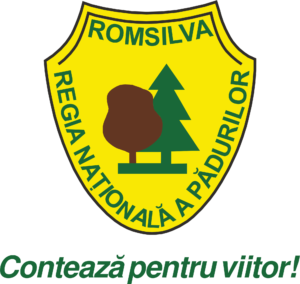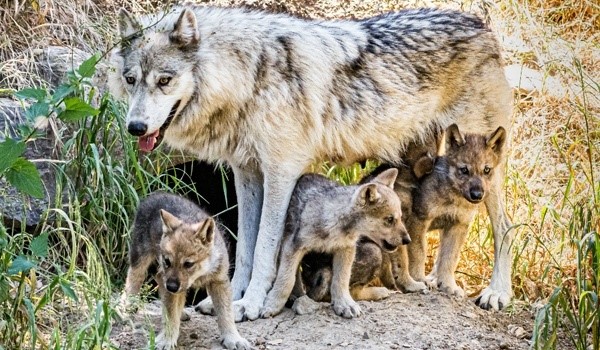Project initiated and carried out by RNP Romsilva - Covasna Forest Directorate in partnership with CovAlpin

The wolf ( Canis lupus )

What does the wolf look like?
The wolf, scientifically called Canis lupus, is an animal from the Canidae family, which also includes the dog, the fox, the jackal and the raccoon.
The wolf has a slender body, up to 1.5 m long, plus a tail of about 0.8 m. Weight is variable, usually between 30 and 50 kg, but in some cases exceeding 70 kg.
The wolf fur is gray-brown in color with multiple variations. In the temperate zones, the wolf has a summer coat darker in color, and a winter one, lighter, in order to be able to hide and camouflage in the woods, thus being more difficult to be spotted by the prey and therefore being able to hunt more easily. They change their fur by molting, 2 times a year.
Statistics indicate a stable population of 2,500 to 2,900 wolves, spread in areas of high hills and low mountains throughout the Carpathian range. The average density on the territory of Romania is 1.95 wolves per 100 sqkm.
The life expectancy of a wolf is 15 years.
Where does the wolf live?
Many years ago, the wolf was one of the most common wild animals in Romania and could be found in all areas of the country. Now wolves can only be found within the mountain areas and they very rarely go down into dense forests.
Wolves are territorial animals, they organize and live in packs, with a strict hierarchy. This is like a family with several members (4-6 specimens): a leading pair and its cubs – the newborns and youngsters that stay in the pack and help watch over the little ones.
This form of organization helps them defend themselves, take care of each other and hunt.
The male is in charge of getting food. Wolves find a mate for life and usually have only one mate during their lifetime (they are monogamous).


What does the wolf eat?
Wolves are carnivorous mammals, but they can diversify their food. Hunting in packs they kill deer, stags, alpine chamoises or goats, cows, shhep, horses and dogs. During the spring, the wolves tend to hunt fawns, lambs and other young animals. In Romania, the most important food source for wolves is the deer.
Wolves also eat the remains of dead animals that they did not hunt themselves. They may also eat other animals such as wild boars, rabbits and other small rodents, insects, earthworms, garbage and, especially when hungry, blueberries, blackberries and other vegetables.
Grazing domestic animals are easy prey for wolves. When they reach a pasture, wolves kill more grazing animals, because the fenced area permanently awakens the wolves hunting instinct.
Curiosities about the wolf
Since ancient times, the wolf has been a symbol of intelligence and resistance, while numerous Romanian traditions and customs have been linked to coexistence with this remarkable carnivore.
The wolves physical features are impressive to say the least. In search of food, they can travel over 100 km in a single night (the distance from Bucharest to Campina). The running speed of the wolf can exceed 60 km/hour (faster than a car that moves at the legal speed, within a city).
This animal has a great resistance to pain and great courage in battle. More than physical performance, the wolf also has a remarkable intelligence.
In Europe, attacks by wolves have only occurred in exceptional situations, through habituation too close to humans or in cases of rabies.
As with any other wild animal, the encounter with the wolf is rare and to be avoided.
Interesting facts to know about the wolf:
- Despite a fairly large existing population in Romania (2500-2900 specimens), the species is threatened by the extension of human settlements within its natural habitat, by deforestation and infrastructure works that fragment the forests, by poaching and even by the presence of stray & wild dogs in the natural habitats.
- The wolf has a very important role in the natural ecosystem: he is a true health worker of the forest – eliminating the old, sick and underperforming individuals from the species he hunts, contributing to natural selection and maintaining the strength of prey animal populations
- For the Romanian people, the wolf has a special significance, being extremely present in mythology and folklore: from fairy tales, to symbolism and proverbs.
